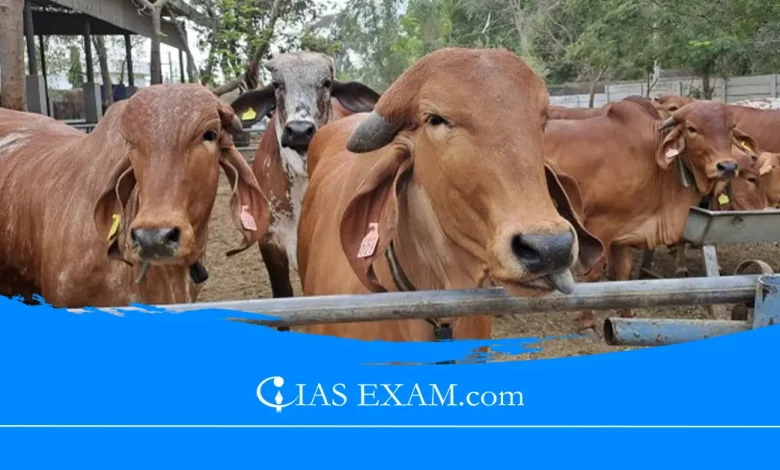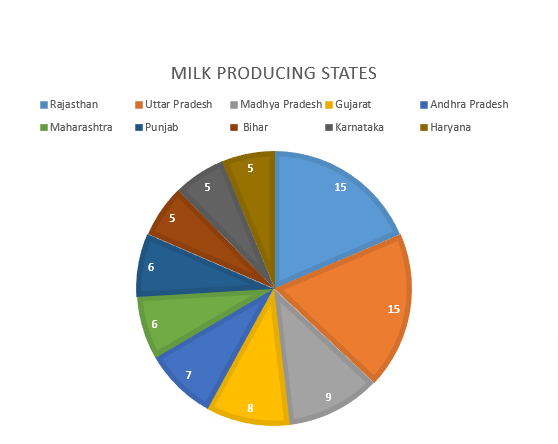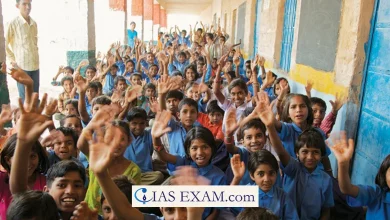
Context
The government has recently released the Household Consumption Expenditure Survey (HCES) for 2022-23 that shows milk emerging as India’s top food spend item.
About
- The National Sample Survey Office (NSSO) under Ministry of Statistics and Programme Implementation has been undertaking family surveys on intake/consumer expenditure at ordinary durations as a part of its rounds, typically of one-year duration.
- Since 1972, NSSO has been carrying out the Consumer Expenditure Survey.
- It is designed to acquire data on intake of products and services by the families.
Major Findings
- The income levels of both the Urban and Rural families have risen since the last survey, with Rural households displaying a sharper growth in spending.
- Of the full expenditure, 46% was spent on food items in Rural households and 39% in Urban houses in 2022-23.
- The month-to-month value of milk and dairy products fed on by an average person in rural India, at Rs 314, was beforehand of vegetables, cereals, egg, fish & meat, fruits, edible oil, spices and pulses.
- For urban India also Milk (Rs 466) emerged as the top item followed by fruits, vegetables, cereals, egg, fish & meat, edible oil, spices and pulses.
Milk Production in India
- India is the biggest manufacturer of milk in the world, contributing 24% of global milk production in 2021-22.
- The top five milk-producing states are: Rajasthan, Uttar Pradesh, Madhya Pradesh, Gujarat and Andhra Pradesh collectively make a contribution of 53% of total milk production in the country.

Challenges Associated with Increased Demand
- Inflation: The price of milk has long gone up from Rs 42 to Rs 60 per litre in the last 5 years, consistent with the branch of customer affairs.
- Rising Input Cost: The price of fodder, feed and uncooked substances/ingredients have elevated significantly.
- Dairies have had to hike procurement charges paid to farmers and, in turn, pass-through the same to customers.
- Purchasing Limit of Consumer: There’s a limit to how much more the consumer can pay for milk without it causing demand destruction.
Solutions to the issue
- If farmer incomes are to be raised without shrinking domestic demand for and eroding the global competitiveness of the Indian dairy industry, the only solution is to reduce the cost of milk production.
How can the Cost of Milk Production be Reduced?
- Improved Breeding and Genetics: Investing in high-yield dairy livestock breeds can grow milk production efficiency.
- Cross-breeding programs geared toward developing more resilient and better-yielding breeds suitable for Indian conditions can be useful.
- Nutrition Management: Providing balanced and cost-effective feed and nutrients to dairy animals can enhance milk yield while reducing input costs.
- Modals for Reducing the cost of Fodder: Amul is setting up a 30-tonnes-per-day Total Mixed Ration (TMR) plant at Sarsa in Anand.
- TMR will comprise dry and green fodder, along with concentrates, vitamins and mineral mixtures, in a ready-to-eat mashed form for animals.
- It might save farmers the cost of buying and storing fodder one after the other, and administering it further to livestock feed.
- Healthcare and Disease Management: Ensuring proper healthcare and disease control measures for dairy animals can prevent losses because of diseases and improve average productivity.
- Cooperative Farming and Collective Bargaining: Encouraging small-scale dairy farmers to shape cooperatives can assist them access resources, infrastructure, and markets more effectively.
- Government Support and Policy Reforms: Government rules that provide subsidies for crucial inputs like feed, veterinary care, and gadget can drastically reduce production expenses for dairy farmers.
- Research and Development: Investing in research and improvement aimed at developing innovative and cost-effective answers for dairy farming demanding situations can cause long-term upgrades in productiveness and value reduction.
Steps Taken by using Government for the Promotion of Dairy Sector in India
- Rashtriya Gokul Mission: It was released in 2014, to preserve and increase indigenous livestock breeds.
- Aim: To enhance the productiveness and genetic development of indigenous cattle.
- National Programme for Dairy Development (NPDD): NPDD has been in place on account that 2014 and ambitions to construct or make stronger infrastructure for the production of high-quality milk as well as for the procurement, processing, and advertising and marketing of milk and milk products via the State Implementing Agency or State Cooperative Dairy Federation.
- Dairy Entrepreneurship Development Scheme (DEDS): DEDS is being implemented by the Department of Animal Husbandry, Dairying, and Fisheries to create self-employment opportunities in the dairy sector.
- It offers monetary help to individuals for putting in small to medium-scale dairy ventures.
- The National Bank for Agriculture and Rural Development is sporting out the programme.
- National Animal Disease Control Programme (NADCP): It is a flagship scheme launched in 2019 for control of Foot & Mouth Disease and Brucellosis by vaccinating 100% cattle, buffalo, sheep, goat and pig populace.
- National Livestock Mission (NLM): The NLM, released by using the Ministry of Agriculture, goals to ensure sustainable development of the livestock quarter, along with dairy farming.
- It specializes in growing the productivity of farm animals, enhancing their fitness, and imparting aid for fodder and feed resources.
Way Ahead
- Faster vaccination drives to overcome situations like Lumpy skin disease death.
- Robust and powerful value chain to conquer the supply chain disruption to maintain the demand for milk and milk products.
- By imposing techniques in a coordinated manner, it’s viable to lessen the value of milk production in India whilst enhancing the livelihoods of dairy farmers and making sure a sustainable and thriving dairy industry.
Source: The Indian Express
UPSC Mains Practice Question
Q.Discuss the scope of replication of ‘White Revolution 2.0’ in India. Critically examine the government initiative to boost milk production in India. (250 words)





.png)



